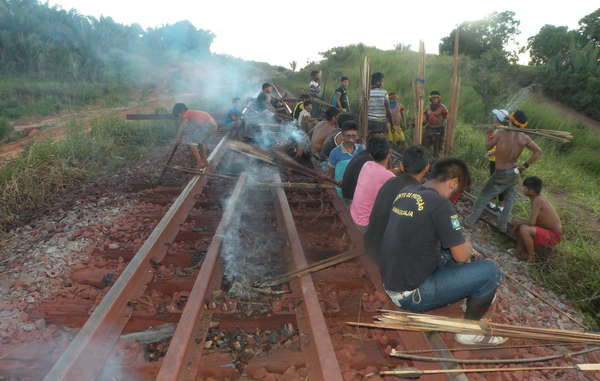
by Deep Green Resistance News Service | Jun 20, 2016 | Obstruction & Occupation
Featured image: The blockade. This is the first time the Awá have initiated a protest of this kind on their own. © Survival International
By Survival International
Members of Brazil’s Awá tribe have blockaded a railroad owned by Vale mining company in the eastern Amazon.
The company has moved to expand the railroad, but the Awá say the expansion will increase the number and size of trains which transport iron ore from the Carajás mine to the port of São Luis – and that this will make it harder for them to hunt for food.
Carajás is the world’s largest open pit iron ore mine. To transport the iron ore, trains that are over 3 kilometers in length regularly hurtle through close to Awá territory.
The tribe are calling for a meeting with the company and FUNAI, the Brazilian government’s indigenous affairs department, so that their wishes can be heard and their rights respected.
On Saturday a large group of Awá families occupied a section of the railroad which runs alongside their land.
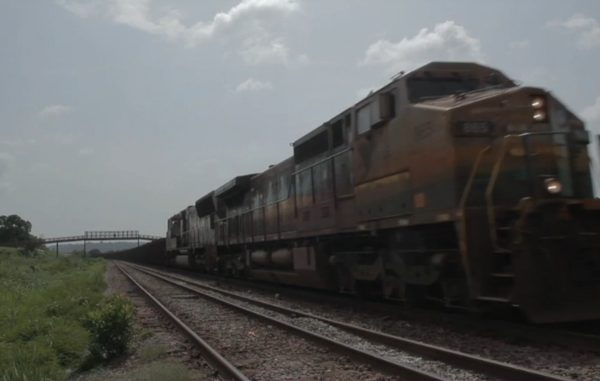
At over 300 carriages in length, the Carajás train is among the longest in the world, and seriously disrupts the animals the Awá depend on for food
© Screenshot
Following a meeting with Vale representatives yesterday, the Awá agreed to suspend the blockade on condition that the company upholds its agreement to mitigate the impacts on the Indians’ forest.
This is the first time that the Awá have blockaded the railroad on their own initiative and reflects their determination to hold Vale to account.
In April 2014 Survival’s international campaign succeeded in pushing the Brazilian government to evict illegal loggers and settlers who had destroyed over 30% of their central territory.
However, the Awá are still one of the most vulnerable peoples on the planet. Around 100 remain uncontacted and are very vulnerable to diseases brought in by outsiders, to which they have no resistance.
Last year fires, possibly started by loggers, ravaged one Awá territory, home to the largest group of uncontacted members of the tribe.
Act now to help the Awá
Your support is vital if the Awá are to survive. There are many ways you can help.
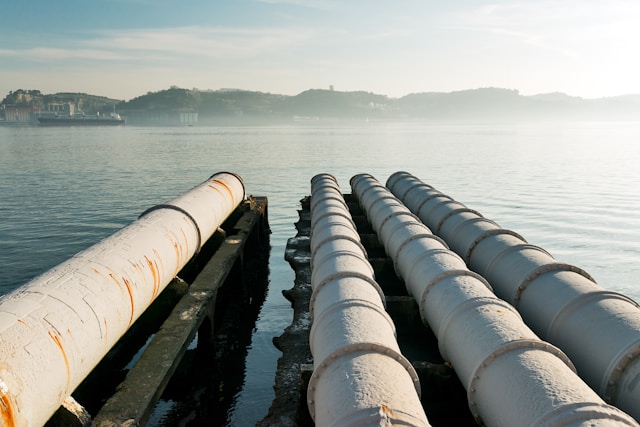
by Deep Green Resistance News Service | Jun 17, 2016 | Mining & Drilling, NEWS
By Steve Horn / Desmog
TransCanada, owner of the proposed Keystone XL pipeline currently being contested in federal court and in front of a North American Free Trade Agreement (NAFTA) legal panel, has won a $2.1 billion joint venture bid with Sempra Energy for a pipeline to shuttle gas obtained from hydraulic fracturing (“fracking”) in Texas’ Eagle Ford Shale basin across the Gulf of Mexico and into Mexico.
The 500-mile long Sur de Texas-Tuxpan pipeline, as reported on previously by DeSmog, is part of an extensive pipeline empire TransCanada is building from the U.S. to Mexico. The pipeline network is longer than the currently operating southern leg of the Keystone pipeline (now dubbed the Gulf Coast Pipeline). Unlike Keystone XL, though, these piecemeal pipeline section bid wins have garnered little media attention or scrutiny beyond the business and financial press.
The Sur de Texas-Tuxpan proposed pipeline route avoids the drug cartel violence-laden border city of Matamoros by halting at Brownsville and then going underwater across the U.S.-Mexico border to Tuxpan.
After it navigates the 500-mile long journey, Sur de Texas-Tuxpan will flood Mexico’s energy grid with gas under a 25-year service contract. That energy grid, thanks to the efforts of the U.S. State Department under then-Secretary of State and current Democratic Party presumptive presidential nominee Hillary Clinton, has been privatized under constitutional amendments passed in 2013.
TransCanada and Sempra were the only bidders. TransCanada owns the joint venture with Sempra — coined the Infraestructura Marina del Golfo, Spanish for “marine infrastructure of the Gulf” — on a 60-percent basis.
“We are extremely pleased to further our growth plans in Mexico with one of the most important natural gas infrastructure projects for that country’s future,” Russ Girling, TransCanada’s president and CEO, said in a press release announcing the bid win. “This new project brings our footprint of existing assets and projects in development in Mexico to more than US$5 billion, all underpinned by 25-year agreements with Mexico’s state power company.”
State Department Role, FERC and Presidential Permits for Sur de Texas-Tuxpan
David Leiter, a campaign finance bundler for Hillary Clinton’s presidential campaign and former chief-of-staff for then-U.S.Senator and current Secretary of State John Kerry, lobbied the White House and the U.S. State Department in 2013 and 2014 on behalf of Sempra Energy on gas exports-related issues.
Sempra has a proposed liquefied natural gas (LNG) export terminal on the northwest, Baja California coast of Mexico calledEnergía Costa Azul (“Blue Coast Energy”) LNG. Leiter’s wife, Tamara Luzzatto, formerly served as chief-of-staff to then-U.S.Sen. Hillary Clinton.
Because the pipeline is set to carry natural gas, as opposed to oil, it does not need a U.S. State Department permit (though tacit and non-permitted unofficial approval could still prove important). Instead, it seemingly technically requires U.S.Federal Energy Regulatory Commission (FERC) approval, as well as a presidential permit.
It is unclear if Sur de Texas-Tuxpan will require a presidential permit, though, given the precedent set in the Wild Earth Nation, Et Al v. U.S. Department of State and Enbridge Energy case.
In that case, the Judge allowed Enbridge to break up its tar sands diluted bitumen (“dilbit”)-carrying Alberta Clipper (Line 67) pipeline into multiple pieces — helped along with off-the-books and therefore unofficial State Department authorization — avoiding the more onerous presidential and National Environmental Policy Act (NEPA) permit review process altogether.
Due to the legal precedent set in another related case, Delaware Riverkeeper v. FERC, oil and gas industry law firm Baker Botts explicitly recommended against utilizing the “segmentation” approach in a January 2015 memo that came out before the Enbridge case ruling.
“Project proponents should be careful to avoid potential ‘segmentation’ of a project into smaller parts simply to try to avoid a more thorough NEPA review,” wrote Baker Botts attorney Carlos Romo. “Segmentation occurs when closely related and interdependent projects are not adequately considered together in the NEPA process.”
The presidential candidates Clinton and Donald Trump have yet to comment on this pipeline or the topic of U.S.-Mexico cross-border pipelines on the campaign trail. But Financial Times, in an April article, pointed out that even Trump — who has pledged he will build a wall between the U.S. and Mexico — has little to say and will likely do little to halt cross-border lines like Sur de Texas-Tuxpan.
“As long as the wall doesn’t go below ground,” Mark Florian, head of the infrastructure fund at First Reserve and a former Goldman Sachs executive, told FT. “I think we’ll be OK.”
Though still fairly early on in the process, Florian’s words have proven true so far.
Photo by Helio Dilolwa on Unsplash
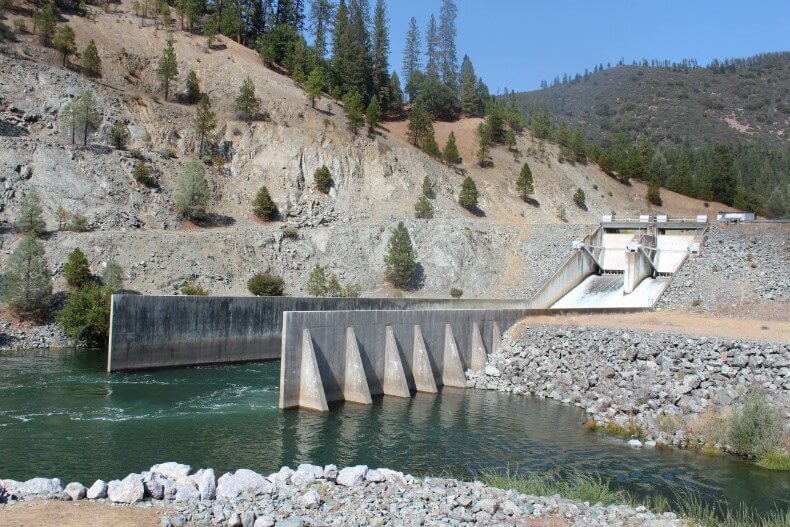
by Deep Green Resistance News Service | Jun 4, 2016 | Lobbying
By Dan Bacher / Intercontinental Cry
On May 24, the Hoopa Valley Tribe from Northern California filed its objection to two bills proposed in the House of Representatives to implement the controversial San Luis Settlement Agreement, saying the agreement would “forever condemn the Tribe to poverty.”
The Tribe filed its complaint prior to a hearing on the two bills, H.R. 4366 (Rep. David Valadao) and H.R. 5217 (Rep. Jim Costa, D-CA), held by the U.S. House of Representative Natural Resources Committee Subcommittee on Water, Power and Oceans.
“Our Tribe is an indispensable party to this settlement,” said Chairman Ryan Jackson, in a press release. “We notified Congress and the Bush and Obama Administrations on numerous occasions over the past several years of our concerns. Though we have been mostly ignored, rest assured, this legislation will not advance in absence of protection of our interests.”
The invited witnesses were John Bezdek , Senior Advisor to the Deputy Secretary, U.S. Department of the Interior; Tom Birmingham, General Manager, Westlands Water District; Jerry Brown, General Manager, Contra Costa Water District; Steve Ellis, Vice-President, Taxpayers for Common Sense; and Dennis Falaschi, General Manager, Panoche Water District.
Notably, the Committee did not invite those most directly impacted by the deal. These include the leaders of the Hoopa Valley, Yurok, Karuk, Winnemem Wintu and other Tribes, commercial and recreational fishermen, family farmers and others whose livelihoods have been imperiled by decades of exports of Trinity, Sacramento and San Joaquin River water to corporate agribusiness interests irrigating drainage-impaired land on the west side of the San Joaquin Valley.
Jackson said the Settlement Agreement contains Central Valley Project (CVP) water supply assurances for 895,000 acre feet of water for the Westlands Water District that originate from the Trinity River, a watershed that the Tribe “has depended for its fishery, economy and culture since time immemorial.”
Michael Orcutt, Hoopa Tribal Fisheries Director, said, “It is a travesty that the pristine waters of the Trinity Alps that have nurtured our people have been diverted from their natural course, sent 400 miles from our homeland and converted into toxic industrial waste by agribusiness in the Central Valley.”
“What makes this worse is that the destruction of our water quality was aided and abetted by our Federal Trustee, the Department of the Interior,” said Self-Governance Coordinater Daniel Jordan.
Instead of ensuring that existing law is enforced for the Tribe’s benefit, the Tribe said the United States government has “focused its energy on escaping federal liability for the generations of mismanagement of the reclamation program.”
The Tribe said it has the first right of use of Trinity River water under the 1955 federal statute that authorized the Trinity River Division of the CVP, but the San Luis Unit settlement and legislation as proposed ignores this priority right held by the Tribe.
“The Secretary of the Interior and Attorney General are blatantly ignoring our rights and the Congressionally-mandated responsibility of the Bureau of Reclamation to furnish the water necessary for fish and wildlife and economic development in the Trinity River Basin,” stated Orcutt.
The Tribe’s testimony includes a proposal for settlement of the drainage issue that also provides for long overdue fair treatment of the Hoopa Valley Tribe. “If Congress approves our proposals, the Hupa people would finally get a long overdue measure of justice,” according to the Tribe.
“Our culture and economy have been devastated by the federal government’s mismanagement of the Central Valley Project and the San Luis Unit contractors’ ongoing assaults on our rights to Trinity River water,” said Jackson, “Now is the time to end the fighting and begin the long process of recovery.”
A coalition of fishing groups, conservation organizations, Delta farmers, Tribal leaders and environmental justice advocates is opposing the bills. Barbara Barrigan-Parrilla, Executive Director of Restore the Delta, said U.S. taxpayers, and Californians in particular, should be “alarmed” that H.R. 4366 and H.R. 5217 (Rep. Jim Costa, D-CA) are moving forward.
“The settlement agreement reached in September 2015 between the Obama Administration and these large industrial agricultural, special-interest water districts, will result in a $300 million taxpayer giveaway without addressing or solving the extreme water pollution these irrigation districts discharge into the San Joaquin River, and ultimately, the San Francisco Bay-Delta estuary. It is exactly these types of taxpayer giveaways to corporations that have incensed voters in both parties this election year,” said Barrigan-Parrilla in a statement.
The objections filed by the Hoopa Valley Tribe on May 24 come just a week after the Tribe filed a 60-day notice of intent to sue the Bureau of Reclamation (BOR) and NOAA Fisheries for violating the Endangered Species Act (ESA) by failing to adequately protect salmon on the Trinity and Klamath rivers.
“Failure by these federal agencies to reinitiate consultation on the flawed 2013 Klamath Project Biological Opinion (BiOp) will simply add to the millions of sick and dead juvenile salmon already lost due to the Klamath Irrigation Project. High infection prevalence of the deadly salmon parasite Ceratomyxa nova has been directly linked to the Project and its effect upon natural flows in the river,” according to a statement from the Tribe.
“The juvenile fish kills in 2014 and 2015, while not as noticeable to the naked eye as dead adults on the banks, are as devastating to Hupa people as the 2002 adult fish kill,” said Chairman Ryan Jackson.
Meanwhile, the Brown and Obama administrations are pushing a plan that threatens the San Francisco Bay-Delta and Klamath and Trinity rivers, the California Water Fix to build the Delta Tunnels. The plan would hasten the extinction of Central Valley steelhead, Sacramento River winter run Chinook salmon, Delta and longfin smelt and green sturgeon, as well as imperil the salmon and steelhead populations on the Trinity and Klamath rivers.
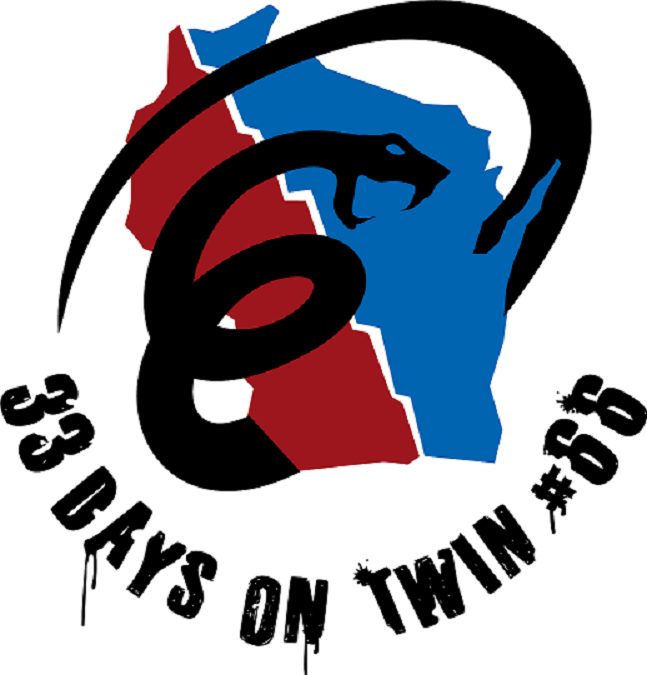
by Deep Green Resistance News Service | May 22, 2016 | ACTION, Protests & Symbolic Acts
By Sacred Water Sacred Land
Sacred Water Sacred Land is sponsoring a tar sands awareness walk through Wisconsin along Enbridge’s proposed Twin Line #66 starting with a kick-off event in Delevan or Walworth on June 8th.
33 Days on Twin #66, a Sacred Water Sacred Land sponsored walk, begins at the entry point of the Enbridge pipeline system, just south of Walworth, WI and follows the route northwest to Superior, raising awareness about the existence of, and proposed expansion to, the Enbridge crude and dilbit pipeline corridor along the way.
33 Days on Twin#66 will consist of consecutive daily 10-15 mile segments with community engagement talks in a revival type setting at overnight encampments at many points along the way. The 420-mile pipeline route is broken into four major sections: northern, upper central, lower central and lower.
Winona La Duke, who has fought tirelessly against the Sandpiper expansion in Minnesota, and her sister Lorna, will be riding with us on horseback along several sections of the walk.
Affected communities and landowners will be engaged by representatives of SWSL – Sacred Water Sacred Land, CELDF – Community Environmental Defense Fund, and WiSE – Wisconsin Safe Energy Alliance, through an ecological forum where the impact of the expansion and a broader conversation about the adverse effects of Canadian tar sands extraction and transport will be explained. Guest speakers will also address climate change and traditional ties to the land while local residents will be encouraged to share their stories and efforts towards healing it.
Through this effort, SWSL endeavors to not only draw attention to the tremendous hazards of tar sands/Bakken oil transport but also help communities imagine and co-create a more sustainable, health conscious society with an emphasis on renewables and non-toxic food systems.
We are looking for additional sponsors to lend credence and build support for the Walk. Sponsorship is welcome in many forms. We encourage you to share the Walk with your membership and follow us on Facebook where specific details will be posted as they solidify. If you wish to participate in greater measure, please contact SWSL directly.
It is past time to unify our efforts and promulgate ecological systems literacy. We hope you will join us as we work together towards a paradigm shift of social and environmental justice for the natural world and the next seven generations.
Cosponsored by WiSE, CELDF, and SWSL
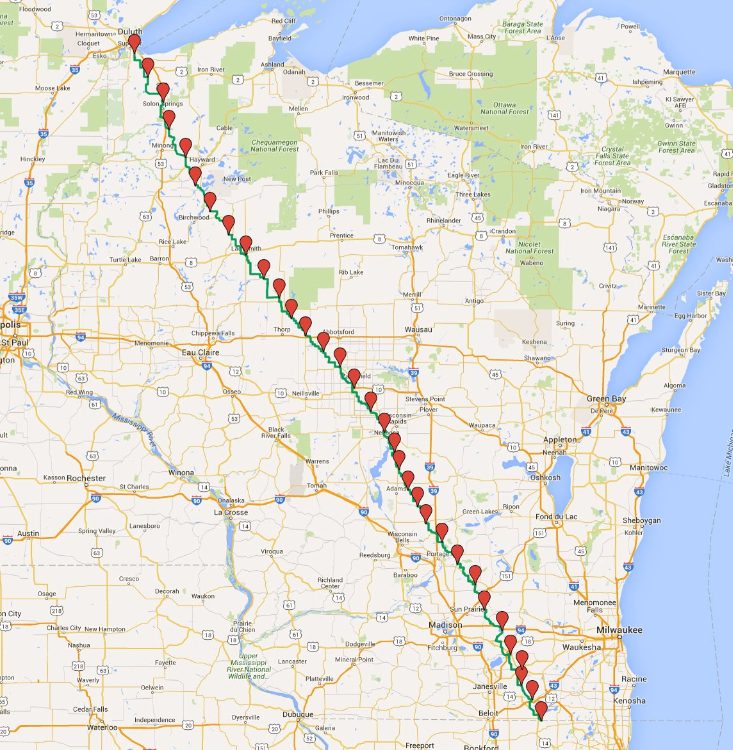
Schedule:
1 ~ June 8th – Walworth*, Kick-off!
2 ~ June 9th – Delavan*
3 ~ June 10th – Richmond
4 ~ June 11th – Whitewater*
5 ~ June 12th – Fort Atkinson*
6 ~ June 13th – Lake Mills*
7 ~ June 14th – Sun Prairie*
8 ~ June 15th – Columbus*
9 ~ June 16th – Wyocena
10 ~ June 17th -Portage*
11 ~ June 18th – Oxford*
12 ~ June 19th -Westfield
13 ~ June 2oth – Adams/Friendship*
14 ~ June 21st – Cottonville
15~ June 22nd – Lake Arrowhead
16 ~ June 23rd – Nekoosa*
17 ~ June 24th – Vesper
18 ~ June 25th – Marshfield*
19 ~ June 26th – Spencer
20 ~ June 27th – Riplinger
21 ~ June 28th – Owen/Withee*
22 ~ June 29th – Lublin
23 ~ July 30th – Gilman
24 ~ July 1st – Sheldon
25 ~ July 2nd – Ladysmith*
26 ~ July 3rd – Imalone
27 ~ July 4th – Meteor
28 ~ July 5th – Hauer-Stone Lake
29 ~ July 6th – Hayward
30 ~ July 7th – Gordon*
31 ~ July 8th – Salon Springs
32 ~ July 9th – Hillcrest
33 ~ July 10th – Superior*, Renewable Energy Independence Day!
* Denotes Revival
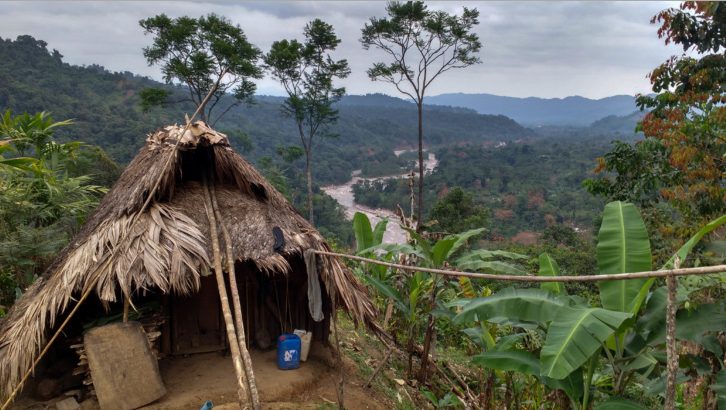
by Deep Green Resistance News Service | May 8, 2016 | Indigenous Autonomy, Obstruction & Occupation, Property & Material Destruction
This is the first installment of “The Guardians of Mother Earth,” a four-part series examining the Indigenous U’wa struggle for peace in Colombia.
On September 23, 2015, in the Palace of Conventions in Havana, Cuba, his excellency Juan Manuel Santos, the President of the Republic of Colombia, and Commander Timoleon Jimenez, Chief of General Staff of the Revolutionary Armed Forces of Colombia, signed an agreement on transitional justice and reparations to the victims of the country’s 51 year old civil war, resolving one of the final points in the country’s peace negotiations.
“We are adversaries, we come from different sides, but today we move in the same direction,” said President Santos, “this noble direction that all societies can have, is one of peace.”
In a show of unity, the warring parties all wore white-collared shirts without ties, as they sat on opposite sides of the brown mahogany tables encircling an artificially bright-green shrubbery arrangement. Around the room’s perimeter stood a throng of reporters, crowded together behind a red rope line, snapping photos of the historic handshake between the president and the leader of the country’s largest guerrilla army. A prolonged war that has killed more than 260,000 people and victimized and displaced seven million more seemed to be drawing to an end.
Among the victims of the conflict are the Indigenous Peoples of Colombia. Of the 102 tribal nations in existence today more than half are at risk of disappearing – forced displacement and mining on indigenous territory during the armed conflict have contributed heavily to the widespread demise.
A progressive genocide of negligence and privation is also taking place. The Indigenous Peoples of Colombia are routinely denied basic commodities such as antibiotics, vaccines and clean drinking water that residents of big cities take for granted, not because the country’s indigenous have been targeted for extermination, but because they have become politically insignificant.
During the Havana peace accord, the indigenous nations who trace their Colombian heritage back thousands of years, from before the time of the Spanish conquest, were not mentioned once.
Inside a wooden shack in the isolated cloud forests of eastern Colombia, three kilometers west of the Arauca river on the Venezuelan border, Berito Cobaria, the internationally recognized leader and spiritual guide of the indigenous U’wa, points out the shades on the x-ray scan of his chest. It shows the same strain of tuberculosis that is ravaging his people.

Berito X-ray. Photo: Jake Ling
The single-story hospital in Cubará, the nearest town on the river, is poorly equipped and understaffed. Visits from medical specialists are rare because the hospital is located in the “Red Zone” – conflict areas the Colombian government has declared dangerous due to the heavy concentration of guerrilla forces.
“The government needs to establish a tuberculosis clinic in Cubará,” Berito told IC. He confirmed he is slowly overcoming the deadly disease but despairs for his people as the tuberculosis outbreak rapidly spreads throughout the U’wa Nation’s ancestral lands. The U’wa believe there needs to be harmony in the world for there to be harmony in the cosmos, but the balance of nature has been disturbed and a sickness has fallen upon Berito’s people. Infectious western diseases such as influenza, dysentery, tuberculosis, and the common cold continue to wreak havoc on the unaccustomed immune systems of the U’wa, who up until the late 1940’s lived an isolated existence on the forested cliffs and the remote Andean wetlands and cloud forests of eastern Colombia.
Beginning on February 13th, 2016, Colombia’s second largest guerrilla army, the ELN (Army of National Liberation) imposed a 72-hour armed strike inside Red Zones like Cubará and other towns that border U’wa territory. Under the threat of violence, all stores and businesses in Cubará were closed, the roads were empty and lucky members of the Colombian military got three days’ rest in fortified outposts while their colleagues searched for explosives laid along Highway 66. Despite their dominance in the frontier towns along the Venezuelan border, even the ELN needs to gain permission from indigenous authorities like Berito to enter the ancestral lands of the U’wa. Known as the United U’wa Resguardo, the territory is restricted to all outsiders.
A day after the ELN’s armed strike was lifted, U’wa families on their way to Cubará to stock up on supplies of bread, sugar, eggs and tobacco were traveling barefoot or on the backs of pickup trucks past Berito’s home, which stands sentinel on the eastern border of the resguardo. Ten minutes away at the border town, Colombian soldiers had returned from their outposts to patrol the streets. Stores were serving clients, and locals walked openly with white plastic shopping bags, acts that had been banned and punishable by death during the armed strike. The only trace of the armed strike was the ubiquitous graffiti scrawled on buildings around town: “ELN – 51 YEARS OF RESISTANCE”.
Historically, U’wa territory has been of strategic importance to the Marxist guerrillas because it connects the contraband routes from Venezuela over the Arauca river to the central Andes of Boyacá province, a short drive from the capital Bogotá. Unarmed outside of the agricultural tools they use to cultivate staple crops of yucca, plantains and potatoes, the U’wa authorities will reluctantly grant permission to the ELN to pass through the resguardo on the strict condition they do not set up camp inside their territory. In return the ELN respect U’wa sovereignty, will not enter without permission and will not stop until they have traversed the steep and extremely difficult climb out of the cloud forests and cross the western border of the resguardo, below the snow-capped mountains of the Sierra Cocuy and Güicán.
This region, which is rich in lucrative oil and gas reserves, is also of great strategic importance to the United States’ and Colombian governments, multinationals like Houston-based Occidental Petroleum and Spanish oil giant RepSol, as well as the right-wing paramilitary death squads, which have been historically allied with the central government and big business. For the U’wa Peoples, however, oil is the sacred blood of their Mother Earth, and without its blood their mother will die. For more than two decades U’wa have mobilized aggressive non-violent campaigns to assert more control over their ancestral territory in the midst of one of the most troubled regions of the Colombian Civil War, but it was their struggle against Occidental Petroleum (called Oxy for short) that gained international attention in 1997, when Berito declared that his people “would rather die, protecting everything that we hold sacred, than lose everything that makes us U’wa.”

Oil blocks on U’wa territory. Map by Fidel Mingorance / HREV 2014
As Oxy pushed into the U’wa’s ancestral lands, the indigenous nation collectively threatened to commit mass suicide by leaping off a 15,000-foot cliff if drilling on their territory went ahead. This was not a publicity stunt. U’wa tribal lore tells of their people walking off the “Cliffs of Glory” en masse centuries ago rather than submit to the brutal Spanish conquistadors. The U’wa set up a makeshift village beside Occidental Petroleum’s Gibraltar 1 drilling site, and were clubbed, tear-gassed, threatened with rape, evicted, arrested, and harassed by state security forces on behalf of Oxy. A year later in 1998, Berito was given the prestigious Goldman Environmental Prize for leading the non-violent campaign against Occidental Petroleum – the same year the US multinational was complicit in the cluster-bombing of a countryside agricultural community, killing 18 civilians including 9 children, near the resguardo’s south-eastern border, in order to protect the Caño-Limon-Covenas oil pipeline.
The pipeline, jointly run by state-owned Ecopetrol and US-based Occidental Petroleum, pumps up to 220,000 barrels of crude daily from the war-torn Arauca province through U’wa territory on its way to the Caribbean coast. It was also the beneficiary of $100 million US military aid that was granted to the Colombian army in 2003, after Occidental Petroleum spent $4 million lobbying the US government to protect it. The ELN, and their ideological ally, the FARC, have bombed the pipeline more than a thousand times. The consecutive attacks over decades have spilt millions of barrels of cancerous unprocessed crude into the rivers and forests of the region, exponentially more than that of the Exxon Valdez environmental disaster.
In a separate bombing incident in March 2014, the U’wa refused to permit repairs to the pipeline until the government began dismantling the Magallanes drilling site on the northern border of the U’wa resguardo, which Ecopetrol had set up in secret months earlier. The Wall Street Journal reported the Colombian government lost $130 million during the 40-day U’wa protest, which was resolved by dismantling the new drilling rig. Ecopetrol has not cancelled the mining license, however, and the threat of exploitation remains. The most recent attack on the pipeline was a twin bomb attack by the ELN on March 15th, 2016, a week before the deadline to finalize the preliminary peace agreement that President Santos and Commander Timoleon Jimenez had agreed to six months earlier in Havana.
As the March 23rd deadline came and went without even a symbolic gesture of unity, both the FARC and government blamed each other for stalling. A week later the government saved face by announcing to the press it had entered formal peace talks with the ELN, but the country’s second-largest guerrilla army watered down public optimism by stating negotiations would not stop them from attacking critical government infrastructure, which include mining assets in the region and oil concessions surrounding U’wa territory such as Oil Block Cor 19 and Cor 45 which extend across the west and north-west of the resguardo; the Arauca oil block; and RepSol and Integra Oil drilling rigs on the resguardo’s eastern border. There is also Ecopetrol’s Siriri Oil Block, which along with Caño-Limon-Covenas is located in the north of U’wa territory.
A small fraction of a percent of the money rolling in from this multi-billion dollar mining bonanza would be more than enough to fund schools, provide fully-stocked healthcare facilities and install piping to provide clean drinking water for every indigenous and rural community in the region. In one isolated U’wa school inside the resguardo, four computers generously donated by the Colombian government gather dust because there is no electricity; here many of U’wa children are malnourished with swollen bellies because a non-native parasitic worm has contaminated the water supply. In a tin-roofed shack that serves as a hospital in Chuscal on the other side of the resguardo, the head nurse complains of the difficulty of caring for patients suffering from tuberculosis and dysentery because of a lack of vaccines, antibiotics and even clean drinking water after an oil spill contaminated the river.
Now while the international community is openly discussing buzzwords like “Peace Colombia” and “post-conflict” in anticipation of a historic peace agreement between the FARC and government, the U’wa people are demanding high-level talks with the government to address their various grievances. The government response has thus far been to ignore the U’wa, or to invite an indigenous delegation to Bogotá where low-level bureaucrats with no authority merely shuffle papers and nod their heads. Meanwhile, the tuberculosis outbreak continues to spread across U’wa territory.
The U’wa, who call themselves the people who know how to think and speak, consider themselves the Guardians of Mother Nature, and large tracts of land inside their territory have become biological reserves for jaguars, spectacled bears, as well as a kaleidoscopic array of endemic plant and bird life that do not appear anywhere else on the planet. As an ambassador for his tribe, Berito has traveled the world recruiting the support of activists of all stripes, from the late Terry Freitas, native American activists Ingrid Washinawatok and Lahe’enda’e Gay, to the founder of Amazon Watch Atossa Soltani, and Hollywood celebrities like Avatar director James Cameron.
The indigenous leader knows that the ability of his pacifist tribe of 7,000 people to defend themselves against these extremely powerful economic and political forces is limited. This is especially true while numerous multinationals and armed groups battle for control around and sometimes inside his people’s land hidden from the eyes of the international community beneath the forest canopies. Non-violence, however, needs an audience and once again the U’wa leader is calling upon the world to watch over his people.
“History is its own kind of law,” Berito said. “They say the land is dead, but it lives yet. It is only wounded by the taking of oil. The dignity of native peoples comes from the land – and like the land it can be saved.”
The second installment in this series examines the U’wa struggles against tuberculosis, parasitic worms, climate change and threats of violent paramilitary repression. You can read it here: They say the land is dead, but it lives yet









